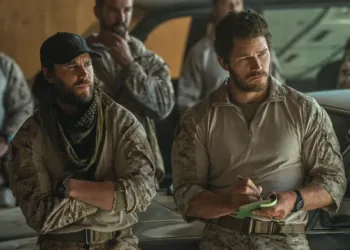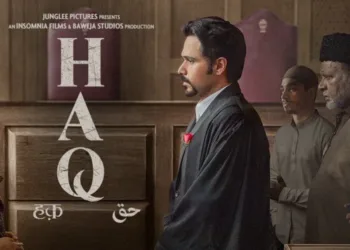Netflix’s latest true crime documentary Aileen: Queen of the Serial Killers has reignited fascination with one of America’s most controversial criminal cases. But beyond Wuornos herself lies another compelling figure: Tyria Moore, the woman whose recorded phone calls helped seal the fate of the woman she once called “the love of my life.”
Table of Contents
Tyria Moore’s Role in the Aileen Wuornos Case
| Category | Details |
|---|---|
| Full Name | Tyria Jolene Moore |
| Birth Date | August 3, 1962 (Cadiz, Ohio) |
| Age When They Met | 24 years old |
| Occupation | Motel maid |
| Relationship Duration | 1986-1990 (approx. 4 years) |
| Role in Case | Key witness; provided recorded confession |
| Legal Outcome | Granted immunity; never charged |
| Current Status | Living privately in Pennsylvania, married since 2016 |
| Film Portrayal | Christina Ricci as “Selby Wall” in Monster (2003) |
A Chance Encounter That Changed Everything
On an ordinary evening in June 1986, two women crossed paths at Zodiac, a gay bar in South Daytona Beach, Florida. Tyria Moore, then 24 and working as a motel maid, met 30-year-old Aileen Wuornos, a highway sex worker struggling to survive. According to Moore’s own recollection, they were both alone that night, started talking, and Wuornos went home with her.
Within weeks, they’d moved in together, embarking on what Wuornos would later describe as a relationship of intense devotion. In documented interviews, Wuornos stated the connection was “love beyond imaginable” and that Moore was the sole reason she carried a weapon for protection during her dangerous work.
What began as romance, however, would eventually become entangled in one of the most disturbing serial murder cases in American history.

Life on the Margins: Supporting a Relationship Through Survival
Moore initially worked her motel job when the relationship began, but later quit and relied entirely on Wuornos’ support. The couple lived a transient lifestyle, moving between cheap motels, trailers, and occasionally camping in wooded areas across Florida.
Wuornos later told investigators that every dollar she earned on the streets went toward supporting Moore, claiming she worked tirelessly because they needed to pay bills and Moore expected better living conditions. According to Wuornos’ statements, the financial pressure became overwhelming—she was barely making $300 every two weeks while dealing with dangerous clients and exhausting late nights.
This financial strain coincided with the beginning of Wuornos’ killing spree. Between late 1989 and 1990, seven men would be found shot to death along Florida highways, though Moore has consistently maintained she had no involvement in the murders.
When Suspicion Turned to Evidence
As more men disappeared, Moore began noticing stolen items and unfamiliar cars appearing in their possession. Despite growing suspicious, she reportedly avoided confronting Wuornos directly, fearing what the answers might reveal. According to later testimony, Wuornos claimed she’d confided in Moore after the first murder, but Moore insisted she didn’t want to discuss it further.
By 1990, the relationship had deteriorated under mounting pressure. Moore ended things and returned to her parents’ home in Ohio, leaving Wuornos behind in Florida.
The Phone Calls That Sealed a Conviction
After Wuornos was arrested on January 9, 1991, at The Last Resort biker bar in Volusia County, investigators tracked Moore to Pennsylvania. What happened next remains the most controversial aspect of her involvement.
Police convinced Moore to place recorded phone calls to Wuornos, during which she urged her ex-girlfriend to confess. In those emotional conversations—now preserved in the Netflix documentary—Wuornos made devastating admissions.
In one particularly heart-wrenching exchange, Wuornos told Moore: “I’m not gonna let you go to jail. Ty, I love you. If I have to confess everything just to keep you from getting in trouble, I will.”
These recordings became crucial prosecution evidence. Moore later testified in court, describing what she knew about the period while maintaining she had no role in the crimes.

The Aftermath: A Life Out of the Spotlight
After the 1992 trial concluded, Moore stepped away from public life, reportedly declining participation in dramatizations and most interviews. When Monster—the Oscar-winning 2003 film starring Charlize Theron—was produced, Moore’s character was renamed “Selby Wall” and played by Christina Ricci to avoid potential legal issues.
According to public records, Moore married Joyce Karchner on May 22, 2016, and now lives quietly in Pennsylvania. Some unconfirmed reports suggest she entered witness protection, though this has never been officially verified.
Wuornos, meanwhile, spent nine years on death row before her execution by lethal injection on October 9, 2002. Even in her final days, she claimed to still be in love with Moore.
The Moral Gray Zone: Victim, Betrayer, or Survivor?
Moore’s role in the case continues to divide opinion. Some view her cooperation as necessary justice—helping stop a serial killer. Others see a woman who exploited Wuornos’ devotion to save herself, possibly even profiting from the tragedy through undisclosed media deals.
What remains undisputed is that no charges were ever filed against Moore, and investigators described her cooperation as the turning point that moved the case from rumor to concrete evidence.
For viewers exploring the case through Aileen: Queen of the Serial Killers, Moore represents the complicated intersection of private relationships and public tragedy. Her story reminds us that true crime isn’t just about perpetrators and victims—it’s also about the people caught in between, making impossible choices under extraordinary circumstances.
FAQs
Did Tyria Moore know about the murders while they were happening?
Moore has always maintained she didn’t know about the killings until after they occurred. She testified that Wuornos mentioned killing a man after the first murder, but Moore claims she didn’t want to hear details and grew suspicious only when stolen items and vehicles started appearing. She was never charged with any involvement, and prosecutors determined she had no direct role in the crimes.
What happened to the relationship between Tyria Moore and Aileen Wuornos?
The relationship ended in 1990, with Moore returning to her parents’ home before Wuornos’ arrest in January 1991. Despite Wuornos’ recorded declarations of love during the phone calls that led to her confession, they never reconciled. Wuornos claimed to still love Moore even at her execution in 2002, but Moore has maintained silence about their relationship for over three decades.








